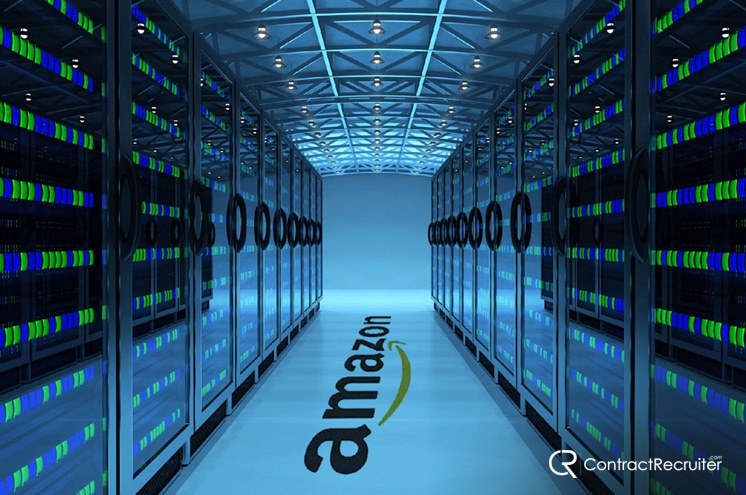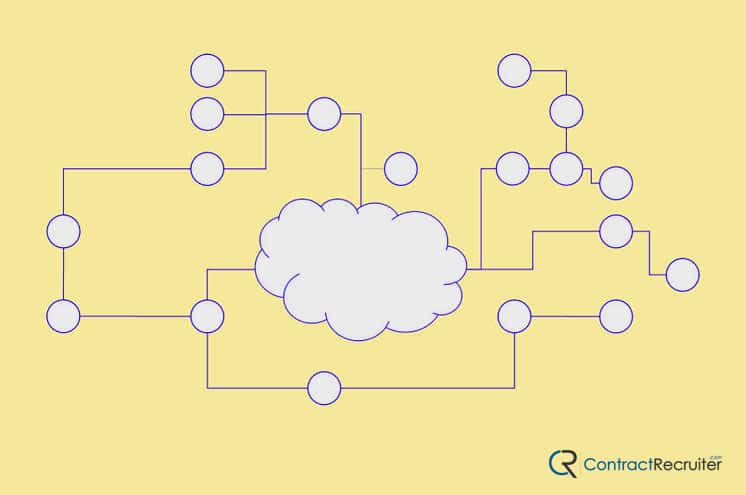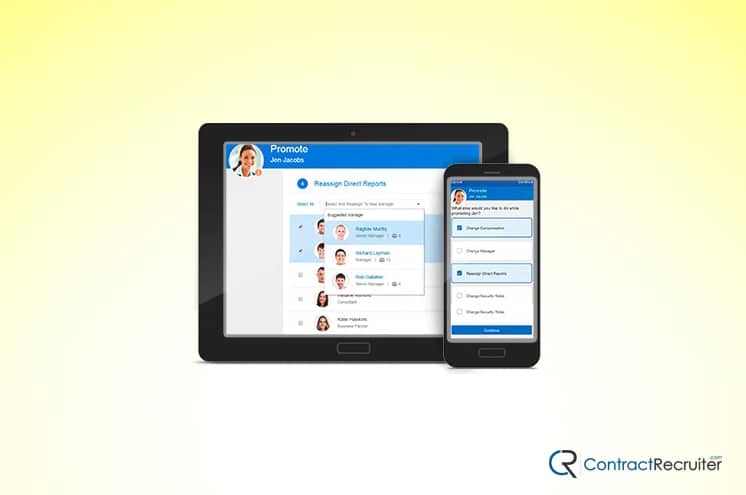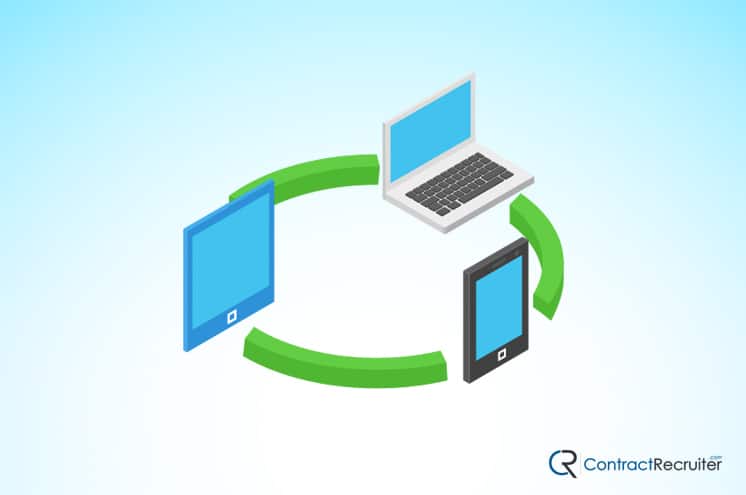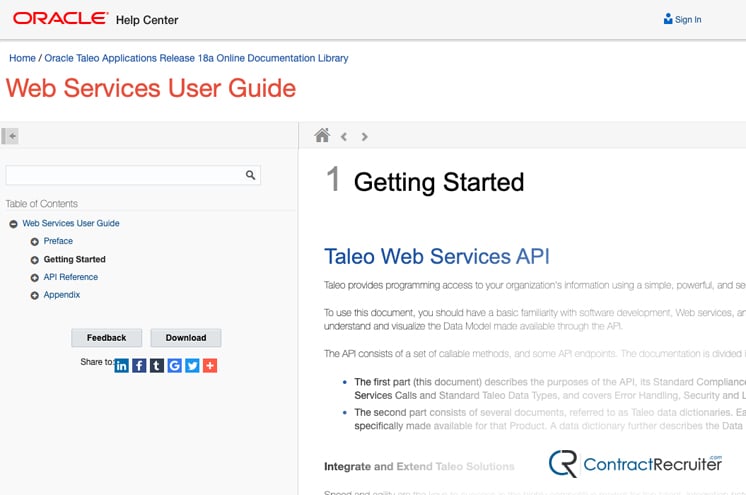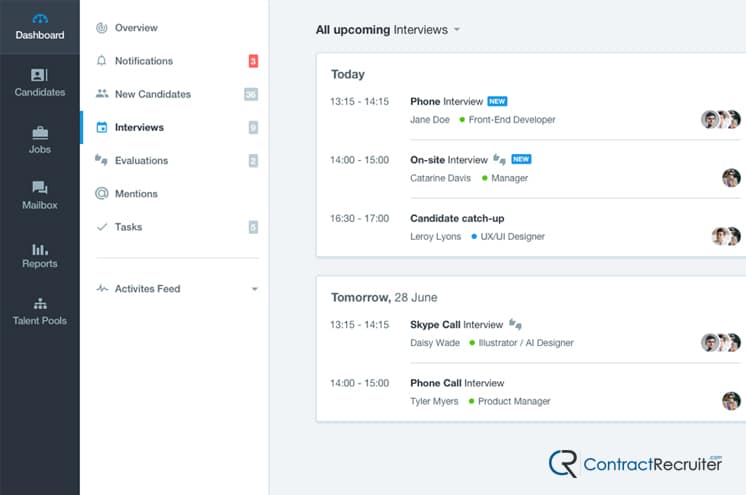As the internet has grown more and more widespread around the world, so too have internet-based applications. Gone are the days where you need a bulky computer to handle simple tasks, tethering you to your desk. Today’s business applications are hosted on the cloud, beamed to thin clients and phones no matter where you are.
Recruiting software is no different. Sure, there are plenty of traditional platforms still in operation with software that you set up on a central business server (or on your HR team’s computers). Sure, there are plenty of people who still use Microsoft Excel or Word to handle most of their recruiting.
These have undeniable limitations, though, that cloud-based software can solve.
What Is The Cloud
Before we go too much further, it can be useful to talk about what “the cloud” actually is. The cloud is a buzzword used by Software As A Service (SAAS) companies to make their products sound more distinct or somehow magical.
The “cloud” itself is just a computer, somewhere, on the internet. Modern cloud applications tend to use a platform like Amazon Web Services, the Google Cloud, or a Cloud Application Platform like Heroku.
So what’s the benefit? Why allow Amazon to host your business application rather than host it yourself or install it locally? Well, there are a handful of benefits to a cloud architecture in general.
- It’s often cheaper to run. Rather than paying for and maintaining expensive computer hardware and a powerful internet pipeline to your business, you pay a smaller monthly fee to let Amazon handle that in their massive global datacenters.
- It’s much easier to scale. Your business is growing, and so are your software needs. You don’t need to worry about scaling up hardware at the same time.
- It’s easy to access from anywhere. Cloud providers typically have distributed networks similar to CDNs, allowing anyone to access the cloud data from virtually anywhere they have an internet connection.
- Local machines don’t need much power. Since all of the processing power necessary to run the business application is in the datacenter, the machines used to access it can be phones, old laptops, or modern computers, with anything in between.
- Your data is typically more secure. If a thin client is lost, your data isn’t. If a server crashes, the cloud provider’s redundancy means nothing is lost. Uptime is also much higher.
Of course, the cloud isn’t a perfect model. Anyone who wants to work needs to have a stable internet connection, which isn’t always available even in rural America, let alone other nations. When you’re paying another company to access their software, you’re beholden to changes they make; if they change their platform in a way you don’t like, you just have to deal with it.
Cloud-based Recruiting
Cloud-based recruiting means using a cloud-managed platform as your applicant tracking system. There are a number of different companies that provide these offerings, so you have your choice to find one that fits your business needs, your intended scale, and your budget.
How does it all work? Well, in part, this depends on the precise platform you’ve chosen to use. Some cloud recruiting platforms cover the entire process from posting a job opening to managing applications to screening candidates to processing background checks to hiring and finally to onboarding for your company. Others will take a single element of that process and specialize in it, with data imports and exports to link to other platforms to help with the rest.
Here we encounter one of the primary drawbacks to cloud recruiting. You need to piece together a platform that does everything you need it to. In some cases, this means a single application, while in others it might mean two or three, all linked together. If no one platform does everything you want it to do, you either have to supplement it with non-cloud applications (which defeats the purpose of using the cloud) or you have to link it to another cloud platform.
Each cloud platform you use is a potential point of failure, to be sure. While a cloud provider is going to attempt to guarantee a high degree of uptime, there will always be the potential for local connection issues, access issues, and technical problems that get in the way of using it.
Of course, if the alternative is forcing your hiring team to be stuck in an office all day, or transcribing data from paper notes taken at trade shows and job fairs, well, you can probably deal with the occasional connection issue.
The Benefits of Cloud Recruiting
There are a lot of potential benefits to using cloud computing to power your recruitment process.
The first and most obvious is that there are systems already in place to do it all for you. Some of them, like Zoho Recruit, are part of large ecosystems that include everything from in-house knowledge bases to customer support. Others, like Freshteam, are more focused on just the recruiting aspect and let you handle other business processes the way you prefer. You have a lot of options either way.
As with cloud computing in general, cloud recruiting has the primary benefit of broad accessibility. Have an employee at a trade show? They can access their recruiting dashboard from the venue’s connection. Sending a recruiter to a job fair? As long as they can connect to the local Wi-Fi, they can add new candidates to your database quickly and easily. Going on a business trip and meet someone you want to add to your system? You can, with ease, as long as you have a connection, or even from your phone.
Contrast this with the alternative. You might have to collect business cards and conduct preliminary contact through email. You might need to use a more powerful laptop with a VPN connection to your home base network, which can be flaky. You might need a more powerful computer in general, one that has your recruiting data on it, which presents not just a higher value machine, but greater data security risks.
Another benefit of using a cloud system is data syncing. If you have a hiring team that consists of more than one person – as most businesses larger than startups do – you will have multiple people adding data to the system at any given time. Organizing this with an in-house or even an Excel-based system is tedious, and prone to errors. Cloud-based recruiting platforms, meanwhile, allow everyone to access the system at the same time, adding data in an easy way, and everything is added appropriately without conflicts.
Cloud recruiting platforms often offer collaboration and team management systems as well. Whether this means your hiring team is able to work together to screen candidates, or that your HR team can work with other departments to figure out their needs for new hires, it can all be defined and performed on the cloud platform itself.
Of course, collaboration isn’t limited to just your own teams. The vast majority of cloud-based platforms offer APIs, data exports, data imports, and syncing tools to allow them to function as part of a larger ecosystem. For example, you might be using Taleo to gather applications, Harver to assess potential candidates, and Greenhouse to track applicants. All three of these systems can link to one another and share data, so there’s no risk of letting qualified candidates slip through the cracks.
One question you might be asking is “is it cost-effective?” After all, if you’re setting up your own system, you might only need to buy a license for software once, or you might not even need anything you don’t already have, assuming you’re using typical office tools, forms, and paperwork. Meanwhile, paying for a cloud platform means paying a monthly fee, usually one that scales either to the size of your business or the number of applications you need to process.
The fact is, there are a lot of hidden costs of running your own system that you might not think of as monetary. Any time you need an IT worker to assist with your software, that’s a cost. Any time HR reps spend troubleshooting in-house software, that’s a cost. Any time a promising candidate slips through the cracks, that’s a cost. Frankly, it’s almost always more cost-effective to use a cloud platform.
Recruiting for Modern Times
Probably the biggest benefit of using a cloud-based recruiting platform is that it’s a modern platform for modern times. If your business is stuck using paperwork or a legacy system you haven’t updated since the 90s, you’re holding yourself back.
The key here is agility. A cloud platform allows you to handle your recruiting while you’re on the go, in any situation you need to. A promising candidate met through a networking event can be added to the system and screened before the event is over. This kind of speed is crucial when you’re competing with dozens or hundreds of other companies to contact that recruit. Imagine having to wait until you get home from an event to reach out, only to find that they’ve already accepted an offer.
Yes, implementing a new system is always going to be difficult. You will have to train your employees on the use of the new system, and while it could be intuitively designed and it could have plenty of onboarding training, it’s still going to throw your established team for a loop before they get used to it. That’s just a risk you take when running a business; keeping up with the times is a crucial need.
Once your team gets used to the new process and the flexibility to use it from anywhere they need to, you’ll likely see your successful recruitments skyrocket and the time to hire drop precipitously. That’s not because of cut corners; it’s because the process itself becomes so much easier.
Picking the Right Cloud Platform
There are a lot of different cloud-based recruitment platforms out there, so picking the right one becomes the most important decision to make.
The first thing you need to do is determine your needs and the role of the platform. Look at your current recruiting process. What needs streamlining, and what is already handled by other software or platforms? For example, if you outsource background checks and certification verification, you don’t need to rely on a platform that does all of that for you. If you already have a robust application process that feeds data into your existing applicant tracking system, you might not need a recruiting platform that handles applications as well; just one that manages contacts and the hiring process itself.
Be sure to look at it from the other side as well. Just because you have an app that handles part of the process doesn’t mean you wouldn’t benefit from rolling that process in with another process in a centralized app.
Once you know what you need, you should start looking into the different platforms available and make a comparison chart. Note down their features, their price points, and their customization options. Determine if they integrate nicely with what you need, and note down any unique pros and cons. For example, linking up with social media might be a huge benefit to some companies, but completely unnecessary for others.
Once you have this bird’s eye view, you can contact the most promising options and book a demo. This will show you in practical terms what you’ll be getting into, and you can filter out the companies that are hiding a janky system behind a pretty front end.
Always remember that making this final determination isn’t necessarily final. Most platforms offer ways to import data from competitors, to make changing easy if you need to. You’re not locked into a bad decision.
Cloud recruiting isn’t for everybody, either. It can be a good way to pull in a large amount of data on candidates, but intelligently interviewing and hiring those candidates is something that software just isn’t able to do.
Have you tried cloud recruiting software in the past, or are you thinking of trying it? What was your experience? Let us know in the comments below!


